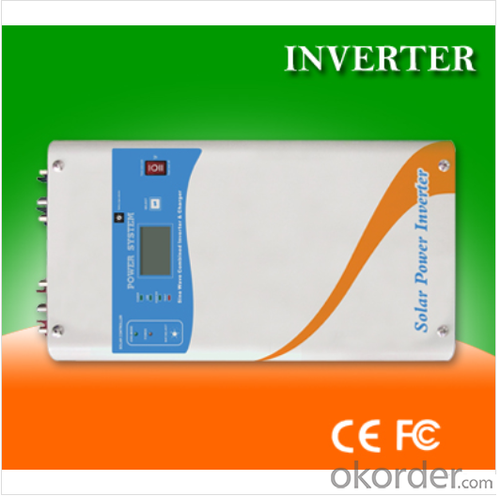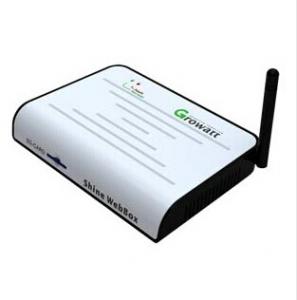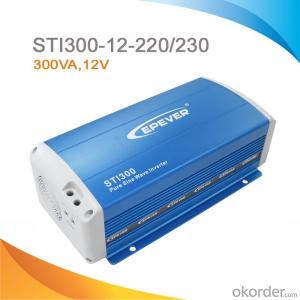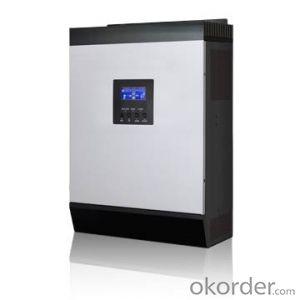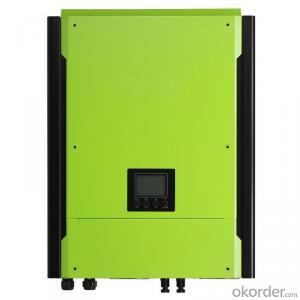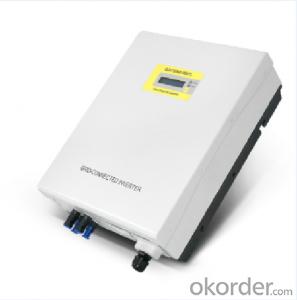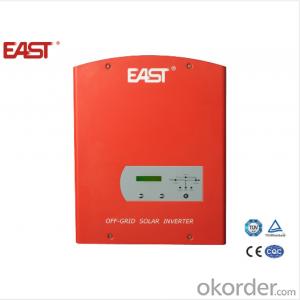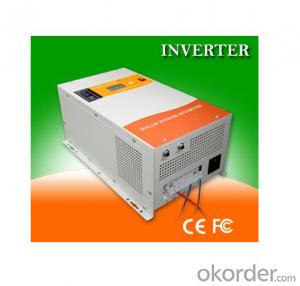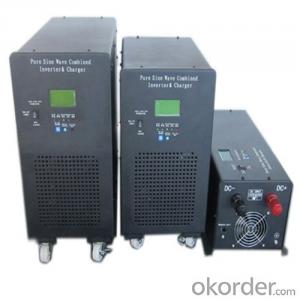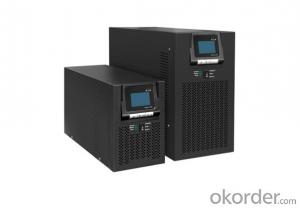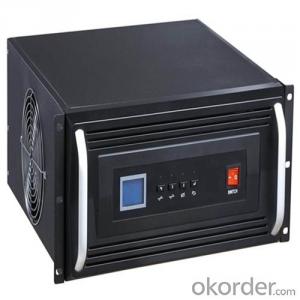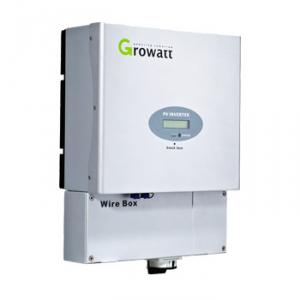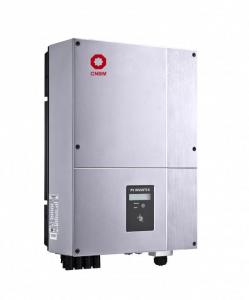Phocos Solar Inverter - Pure Sine Wave Inverter with MPPT Controller 1000W, 2000W, 3000W
- Loading Port:
- Qingdao
- Payment Terms:
- TT OR LC
- Min Order Qty:
- 50000 watt
- Supply Capability:
- 3000000 watt/month
OKorder Service Pledge
OKorder Financial Service
You Might Also Like
1. Structure of Pure Sine Wave Inverter with Mppt Controller 1000w 2000w 3000w Description
A solar inverter, or PV inverter, or Solar converter, converts the variable direct current (DC) output of a photovoltaic (PV) solar panel into a utility frequency alternating current (AC) that can be fed into a commercial electrical grid or used by a local, off-grid electrical network. It is a critical BOS–component in a photovoltaic system, allowing the use of ordinary AC-powered equipment. Solar inverters have special functions adapted for use with photovoltaic arrays, including maximum power point tracking and anti-islanding protection.
2. Main Features of the Pure Sine Wave Inverter with Mppt Controller 1000w 2000w 3000w
﹒Pure sine-wave out put,can be used with different domestic appliance TV,Refrigerator,Fan,Air conditioner ,Induction cooker,micro-wave oven etc.
﹒ Generator compatibly and external battery connection achievable.
3. Pure Sine Wave Inverter with Mppt Controller 1000w 2000w 3000w Images
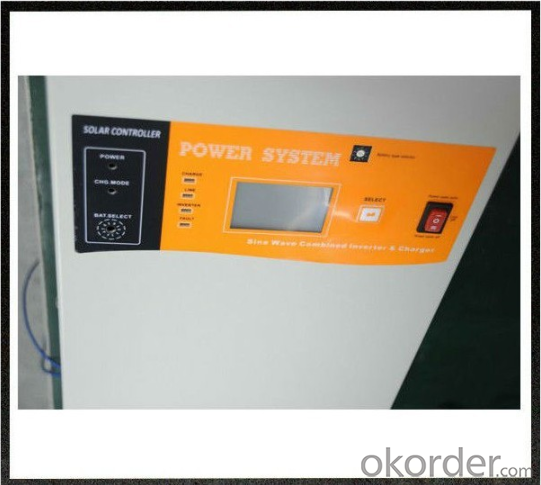
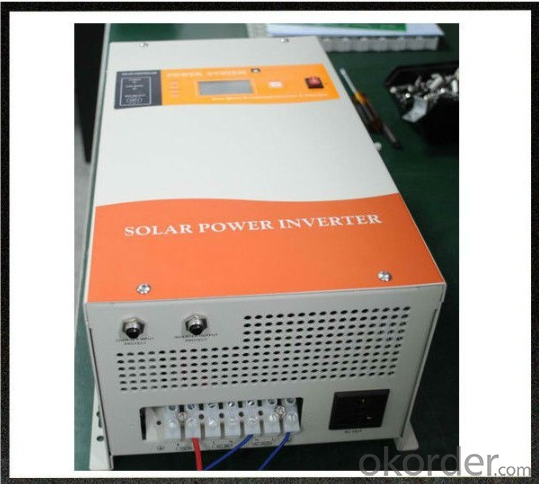
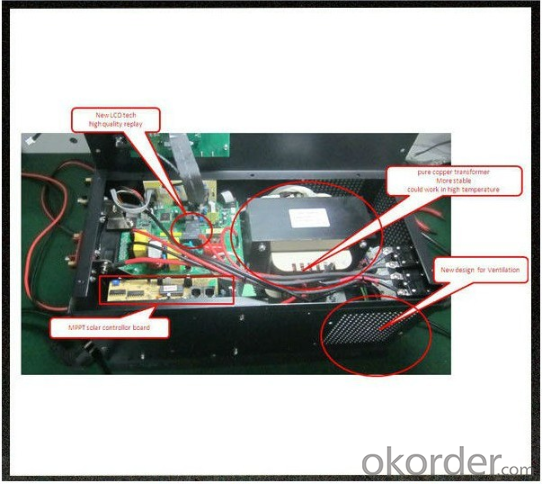
4. Pure Sine Wave Inverter with Mppt Controller 1000w 2000w 3000w Specification
Hybrid Inverter | ||
MPPT solar controller function | ||
Rated Voltage | 12/24V DC | |
Rated Charge current | 40A | |
Load current | 15A | |
Input voltage range | 15-55V DC | |
Max. PV open circuit array voltage | 55V DC | |
Typical idle consumption | At idle< 10mA | |
Overload protection(DC load) | 2.0*Inom>5s 1.5*Inom>20s 1.25*Inom temperature controlled | |
Bulk charge | 14.6V(default) | 29.2V(default) |
Floating charge | 13.4V(default) | 26.8V(default) |
Equalization charge | 14.0V(default) | 28.0V(default) |
Over charge disconnection | 14.8V | 29.6V |
Over charge recovery | 13.6V | 27.2V |
Over discharge disconnection | 10.8V(default) | 21.6V(default) |
Over discharge reconnection | 12.3V | 24.6V |
Temperature compensation | 13.2mV/C | 26.4mV/C |
Lead acid battery settings | Adjustable | |
NiCad battery settings | Adjustable | |
Load control mode | 1.Low Voltage Reconnect(LVR):Adjustable 2.Low Voltage Disconnect(LVD):Automatic disconnection 3.Reconnection:Includes warning flash before disconnect and reconnection | |
Low voltage reconnect | 12.0-14.0Vdc | 24.0-28.0Vdc |
low voltage disconnet | 10.5-12.5Vdc | 21.0-25.0Vdc |
Ambient temperature | 0-40°C(full load) 40-60°C(de-rating) | |
Altitude | Operating5000m,Non-Operating 16000m | |
Protection class | IP21 | |
Battery temperature sensor | BTS-optional remote battery temperature sensor for increased charging precision | |
Terminal size(fine/single wire) | #8 AWG | |
PV inverter battery priority | |||||||
MODEL | 1000w | 1500w | 2000w | 3000w | |||
Input Voltage Waveform | Sinusoidal (utility or generator) | ||||||
Nominal Input Voltage | 230Vac | ||||||
Low Line Disconnect | 155Vac±4% | ||||||
High Line Disconnect | 265Vac±4% | ||||||
Max AC Input Voltage | 270Vrms | ||||||
Nominal Input Frequency | 50Hz/ 60Hz (Auto detection) | ||||||
Over-Load Protection | Circuit breaker | ||||||
Output Short Circuit Protection | Circuit breaker | ||||||
Efficiency (Line Mode) | >95% | ||||||
Transfer Switch Rating | 30A | ||||||
Transfer Time(Ac to Dc) | 20ms (typical) | ||||||
Output Voltage Waveform | Sine wave | ||||||
Rated Output Power (W) | 1000W | 1500W | 1500W | 2000W | 2000W | 3000W | 3000W |
Power Factor | 1 | ||||||
Nominal Output Voltage (V) | 230Vac | ||||||
Output Voltage Regulation | ±10% rms | ||||||
Nominal Efficiency | >80% | ||||||
Nominal DC Input Voltage | 12V | 12V | 24V | 12V | 24V | 12V | 24V |
Nominal Charge Current | 35A | 45A | 35A | 65A | 35A | 75A | 45A |
Charge Current Regulation | ± 5A | ||||||
Battery initial voltage | 0 –15.7 Vdc /31.4Vdc(can operate with 0V battery) | ||||||
Communication: | RJ11 (Used for factory testing. No customer interface available) | ||||||
Safety Certification | CE(EN60950) | ||||||
EMI Classification | EN50091-2, CLASS A | ||||||
Operating Temperature Range | 0°C to 40°C | ||||||
Storage temperature | -15ºC ~ 60ºC | ||||||
Operation humidity | 5% to 95% | ||||||
Audible Noise | 60dB max | ||||||
Cooling | Forced air, variable speed fan | ||||||
5. FAQ of Pure Sine Wave Inverter with Mppt Controller 1000w 2000w 3000w
Q1. What is the difference between inverter and solar inverter?
A1. Inverter only has AC inpput, but solar inverter both connect to AC input and solar panel, it saves more power.
Q2. What is the difference between MPPT&PWM?
A2. MPPT has higher efficiency, it can track the max power point and won't waste energy.
Q3. What is the waranty of product?
A3. 12 months.
- Q: How does a solar inverter handle variations in battery charge levels?
- A solar inverter typically handles variations in battery charge levels by constantly monitoring the charge level of the battery. It adjusts the energy flow from the solar panels to the battery based on its charge level. When the battery charge is low, the inverter increases the energy flow from the solar panels to charge the battery. Conversely, when the battery charge is high, the inverter reduces the energy flow to prevent overcharging. This dynamic control ensures efficient use of the available solar energy and optimal charging of the battery.
- Q: Can a solar inverter be used in conjunction with a backup generator?
- Yes, a solar inverter can be used in conjunction with a backup generator. In a hybrid system, the solar inverter intelligently manages the power supply, utilizing solar energy when available and seamlessly switching to the backup generator during times of low solar production or high energy demand. This setup ensures continuous power supply even during cloudy days or power outages.
- Q: Can a solar inverter be used in mobile or portable solar systems?
- Yes, a solar inverter can be used in mobile or portable solar systems. In fact, they are essential components of such systems as they convert the DC power generated by solar panels into AC power that can be used to power various devices and appliances. Portable solar systems often include built-in inverters to enable convenient and efficient use of solar energy on the go.
- Q: What are the communication protocols used in solar inverters?
- There are several communication protocols commonly used in solar inverters to facilitate communication between the inverter and other devices or systems. Some of the most commonly used communication protocols in solar inverters include: 1. Modbus: Modbus is a widely used communication protocol for industrial devices, including solar inverters. It is a serial communication protocol that allows for the transmission of data between the inverter and other devices, such as monitoring systems or data loggers. Modbus is known for its simplicity and flexibility, making it a popular choice in the solar industry. 2. SunSpec: SunSpec is a communication protocol specifically designed for the solar industry. It provides a standardized way for solar inverters to communicate with other devices, such as smart meters or monitoring systems. SunSpec supports both wired and wireless communication, allowing for easy integration of solar inverters into larger energy management systems. 3. CAN bus: CAN (Controller Area Network) bus is a widely used communication protocol in various industries, including automotive and industrial applications. It is a robust and reliable protocol that allows for high-speed communication between devices. Some solar inverters utilize CAN bus to communicate with other devices or systems, providing a reliable means of data transfer. 4. Ethernet: Ethernet is a widely used communication protocol in the IT industry, and it is also utilized in some solar inverters. By using Ethernet, solar inverters can communicate with other devices or systems over a local area network (LAN) or the internet. Ethernet offers high-speed communication and can support various communication standards, making it a versatile option for solar inverters. It's important to note that different solar inverter manufacturers may use different communication protocols or a combination of them. The choice of communication protocol depends on factors such as the specific requirements of the system, the compatibility with other devices or systems, and the level of integration desired.
- Q: Can a solar inverter be used with dual MPPT inputs?
- Yes, a solar inverter can be used with dual MPPT (Maximum Power Point Tracking) inputs. This feature allows the inverter to optimize and extract maximum power from two separate solar arrays or panels. By using dual MPPT inputs, the inverter can handle variations in shading, orientation, or different panel specifications, thereby maximizing the overall energy production and efficiency of the solar system.
- Q: Are solar inverters weather-resistant?
- Yes, solar inverters are typically weather-resistant. They are designed to withstand different weather conditions such as rain, snow, and extreme temperatures. However, it is still important to consider proper installation and maintenance to ensure the longevity and performance of the inverter in varying weather conditions.
- Q: Can a solar inverter be used with a solar-powered telecommunications system?
- Yes, a solar inverter can be used with a solar-powered telecommunications system. A solar inverter is responsible for converting the direct current (DC) generated by solar panels into alternating current (AC) that can be used to power electrical devices. In the case of a solar-powered telecommunications system, the solar inverter would convert the DC power generated by the solar panels into AC power to effectively operate the telecommunication equipment.
- Q: How does the size of a solar inverter affect its performance?
- The size of a solar inverter directly affects its performance. A larger inverter can handle more power and can convert a greater amount of DC electricity from solar panels into usable AC electricity for consumption. This allows for higher energy yields and improved efficiency. On the other hand, a smaller inverter may not be able to handle the full capacity of a solar panel system, resulting in power limitations and potential energy losses. Therefore, selecting the appropriate size of a solar inverter is crucial for optimizing system performance.
- Q: Can a solar inverter be used with a single solar panel?
- Yes, a solar inverter can be used with a single solar panel. The purpose of a solar inverter is to convert the direct current (DC) generated by the solar panel into usable alternating current (AC) electricity. Whether you have one or multiple solar panels, a solar inverter is necessary to convert the DC power into AC power that can be used to power electrical appliances or be fed back into the grid.
- Q: Can a solar inverter be used with different types of grounding materials?
- Yes, a solar inverter can be used with different types of grounding materials. However, it is important to ensure that the grounding system is compatible with the specific requirements and guidelines provided by the manufacturer of the solar inverter. The grounding materials used should meet the necessary safety standards and provide proper electrical grounding for the solar installation. It is recommended to consult with a qualified electrician or solar professional to determine the appropriate grounding materials for your specific solar inverter and installation.
Send your message to us
Phocos Solar Inverter - Pure Sine Wave Inverter with MPPT Controller 1000W, 2000W, 3000W
- Loading Port:
- Qingdao
- Payment Terms:
- TT OR LC
- Min Order Qty:
- 50000 watt
- Supply Capability:
- 3000000 watt/month
OKorder Service Pledge
OKorder Financial Service
Similar products
Hot products
Hot Searches
Related keywords




